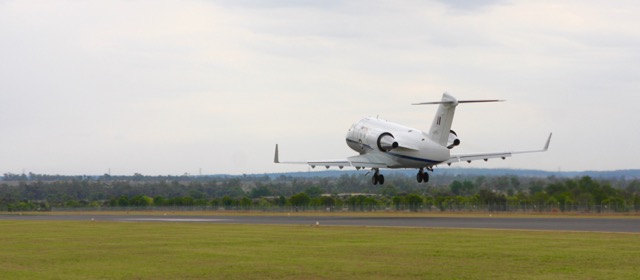
Posts about stuff relating to airports

Safety Performance Indicators: A False Dichotomy?
Everyone knows that when it comes to safety performance indicators, you want them to be leading rather than lagging. We usually start with lagging because they are easier to spot but we’re pushed to find, track, measure and analyse their much superior cousins, the lead indicators. But is it that simple? Of course not...

(UPDATED) COVID-19 Bird Strike Update #1
UPDATE: What I thought was happening with wildlife strike rates during the COVID-19 downturn was not quite the case. I had a little issue with the time taken for reports to be included in the FAA Wildlife Strike Database and thankfully, this issue was picked up by a helpful colleague. See the details within.
Image credit: Azim Islam (via Pexels)


"Obvious Risk" Strikes Again!
Actually, it hasn’t. In fact, it is the opposite.
In today’s article, I’m going to discuss a case where the risk has been deemed “not obvious” and the defendants have had to pay up. The defendants in this case are the airport operator, the aircraft operator and the ground handler. There is also some complex discussion on shared liability that is, despite its potential boring-ness, important to understand.

Better Safety Risk Management: Uncertainty & Decisions
A lot of us have been doing aerodrome safety risk management for a while now. In that time, I’ve made a lot of mistakes and that means, hopefully, that I have learned a bit about risk management. So, I’d like to share some of my best lessons from being a regulator and practitioner of safety risk management over that time.
Image credit: Taryn Elliot via Pexels

Heads Up: Watch Out for Wildlife (Updated)
No need to rehash the current situation, aviation is hurting and traffic numbers are going down.
So why post about wildlife strikes? With traffic down, we should see less strikes, shouldn’t we? Maybe not…
Over the last couple of months, I have been doing some deep diving into the FAA’s wildlife strike database. It is an aerodrome safety nerd’s paradise. There is so much data and a little crunching can reveal some very interesting things.
I want to share one of these insights with you in light our current circumstances.
Image credit: (cc) Quintin Gellar on Pexels

People as Products: The Pitfalls of Six Sigma Passenger Processing
Devotees to the Six Sigma and/or Lean concepts will often adopt a “manufacturing mindset” and set about reducing variation and wastage in as many of their business processes as they can. Airport operations are no different and passenger processing is one the most operational focused areas to target under these concepts.
Almost five years ago, I was learning a great deal about Lean, in particular, but I was struggling with applying the concepts to the bulk of the airport operational environment. And then it dawned on my that the passengers were the product and moving them from curb to cabin (and vice versa) was our production line.
Whilst, from a theoretical point of view, this realisation opened up a lot of options for me, there are some dangers in forgetting that people are still people and that they comes in an almost infinite variety of configurations.
Image credit: (cc) Negative Space on Pexels

Turning your Safety Records Un-Dead
I was reading Bram Stoker’s Dracula to my son the other night and we came across a funny little passage that I felt could be a great record-keeping lesson for airport operators. For me, the whole context was ripe for learning because, up until that point in the book, I would have considered this character’s actions, completely reasonable, if not, meticulous.
So what can the good Count Dracula teach us about good record keeping? Let’s find out…
Image credit: Levin Corbin Handy (via Wikipedia)

Risk Evaluation Series
I have never really liked risk assessments that involve some vague calculation of consequence and likelihood. I have witnessed, and perhaps been involved in, many arguments about where to stick some potential or even past disaster into a limited matrix.
A couple of years ago, I had a whinge/thought experiment on an alternative method of risk evaluation. I enjoyed the use of the term Probability-Impact Graph, rather than Likelihood-Consequence Matrix, to create a little theme - see if you can guess what it was.
I’ve repackaged these posts and a follow-up post for renewed consumption below. Each image is actually a link to the post.

Better Emergency Exercises: Purpose, Planning & Failing Willingly
It takes a great deal of work to plan and execute an airport emergency exercise. They require hundreds of people-hours to organise with meetings, discussions, working groups, control plans and reviews. Approvals go up and down multiple reporting lines and resources (people, equipment and money) are committed.
And yet, I think the hardest part of this process, it that it all leads to everyone, and especially the aerodrome operator, opening themselves up to critique. Each exercise should be designed to push the system and to result in some kind of failure. And after all that, we ask others to tell us what we did wrong and while we know that it is better to fail in an exercise, it is never easy to openly discuss your mistakes.
images credit: (cc) Brussels Airport (Flickr Account)

HBO's Chernobyl is a Must for Safety Nerds and Newbies
After Game of Thrones ended, many people wondered how HBO would survive without its flagship show. A couple of entertainment podcasts I listen to started talking about the new series called Chernobyl. As a safety nerd I was curious but didn’t have any way of seeing it where I currently live. Luckily, last month I found myself in an Airbnb in Sweden with access to an HBO account and I talked my wife into watching it with me.
I was already somewhat familiar with the disaster through university and other studies and I relished rounding out my knowledge in such an engaging way. But what really got my safety-nerd-receptors tingling was the underlying narrative and analysis of complex safety concepts such as latent failures, culture and accident investigation philosophy. In the first scene, in the first 30 seconds, I was hooked.
image credit: (c) HBO

What is Urban Air Mobility? An Airport Operator Primer
Just in case you’ve missed the news recently, drones are a big deal. It’s a billion dollar business, disrupting traditional business models and, most importantly for airport operator, just plain disrupting business. And, as you can imagine, just following the news doesn’t give you a necessarily clear or complete picture of our potential future with these aircraft.
I’d like to jump in and look at one particular area of this phenomenon and it’s relationship to airports but before we do, I feel like it is necessary to scan the field and sort through some of the complexity.
Image credit: (c) Airbus

Airport People Power Series
For my fourth series on New Airport Insider I took at look at airport human resources. I had been working heavily to get the best out of my team at that time and wanted to share what I had learned and experienced on the job. I was especially enjoying my work in the diversity space at the time.
I might need to update the first article though - a lot has changed since then...

Australian Airport Build Series
My third series of articles over on New Airport Insider was on the state of airport development in Australia. The series lined up with one of my co-author's series on development in Indonesia, Turkey and more.
I might need to update the first article though - a lot has changed since then...

Safety Assurance Series
In my second series of articles over at New Airport Insider, I explored the concept of safety assurance. As a "pillar" of Safety Management Systems, I thought I would take a good look at it. I was working very heavily within a highly structured safety assurance system at the time and I leveraged that experience to help me write these articles.

Wildlife Risk Management Series
A long time ago I wrote a rather comprehensive series on wildlife hazard management within an ISO 31000 risk management framework. It was the launch series for the New Airport Insider website and quite a bit of work on my part - but I enjoyed it. So, I thought I would repackage it as a quick blog post with links to each article.

Integrating Runway Safety Teams with your Safety Management System
I've just spent an amazing week in Bali1 workshopping with operators and regulators from the Asia-Pacific region (and some from further afield) on the issue of runway safety. We got a lot of good information from the Flight Safety Foundation, ICAO and COSCAP as well as airlines, airports and regional regulators.
The primary objective of the week was to provide information on and practice in the establishment and conduct of Local Runway Safety Teams (LRSTs). To this end, the seminars and workshop were great but I left feeling like one connection had been missed. The final question on my mind and many others, I am sure, was:
How do these runway safety initiatives integrate into my SMS?

Bird Control Dessert: Fungrass*
Last week I blogged about the ACRP's new synthesis report on bird control techniques and on that very day, Airport International News reported on deterrent grass developed in New Zealand. This new grass is still being tested in NZ so its no wonder it didn't make it into the ACRP's report…
Header image: abdul7amid alfadhly (via Pexels)

5 Ways to Improve Your Aerodrome Manual
I've seen my fair share of aerodrome manuals. Every audit begins with a review of an aerodrome manual and in my past life as a consultant, I wrote a few as well. Unfortunately, the state of the vast majority of aerodrome manuals I've encountered, including my own, could best be described as "needs improvement". But before we get to the tips, let’s just rehash the aerodrome manual rationale. Why do we have this document?

Runways Made Safer? Yeah but…
I caught this story on the web last week. According to the press release (eh, I mean) article, aircraft are falling apart during take-off and landing and the frontline of defence, airport safety officers, are prone to error. Enter the saviour – FOD radar. Okay, that's a cruel, exaggerated (mis)representation.
I will admit that Foreign Object Debris (FOD) is a very real problem for aviation and airports, in particular. Skybrary puts the yearly cost at $4 billion per year (including wildlife) and the list of FOD-induced crashes is often headlined by the 2000 Concorde disaster.
It's the mis-characterisation of runway inspections that gets to me as it seems that the article is trying to paint the following picture:
Image credit: Darli Donizete (via Pexels)
